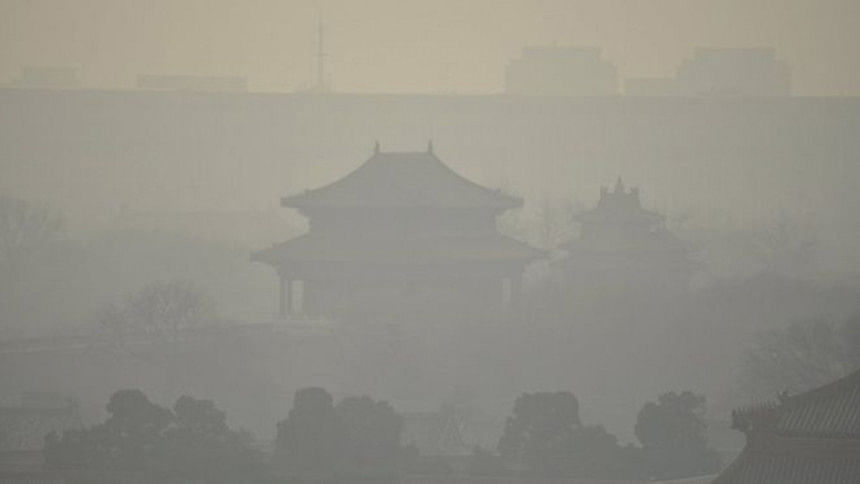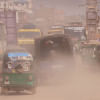Beijing blanketed by dangerous smog

Cars were forced off the road and factories closed in Beijing on Saturday after the city was once again blanketed by hazardous smog.
The government issued a level-four red alert on Friday - the most serious of a four-tier warning system.
The alert, the second in as many weeks, means schools have to close and half the vehicles banned.
The wave of smog is expected to cover the notoriously polluted city until Tuesday, due to a lack of strong winds.
Levels of PM2.5, the smallest and deadliest smog particles, rose as high as 303 micrograms a cubic metre in some parts of Beijing on Saturday, and could top 500 in coming days - more than 20 times the level considered safe by the World Health Organization.
Data published by the US embassy in Beijing showed a high of 261 in the Chaoyang district in central Beijing in the early hours of Saturday morning, falling to 139 by mid-afternoon.
Beijing's Municipal Environmental Monitoring Center said the overall air quality was at 104. Some residents took to Weibo - China's version of Twitter - to say the smog was not as severe as they had been warned and complain about the driving restrictions.
China's government has faced criticism for not issuing severe smog warnings more often. The four-tier smog warning system was launched two years ago but Beijing had not issued a red alert until this month.
However, Beijing resident Ma Yunan said the government was now doing a "better job than before".
"In previous times, the government would not issue red alerts even when the haze was very serious," Ma Yunan told the Associated Press news agency.
"Now they are publishing alerts beforehand for us to get ourselves prepared and the alerts are accompanied with some measures."
Beijing's smog problem is largely blamed on coal burning power plants, industrial pollution and the booming number of cars. The city's geography worsens the problem because mountains on three sides trap smog.
Residents frequently don face masks for their day-to-day activities in an attempt to reduce the health risks. Studies suggest as many as 1.4 million in the country die early because the smog - nearly 4,000 per day.
China is the world's biggest carbon emitter but has said it plans to reduce hazardous emissions from coal-fired power plants by 50% over the next five years. However, overall emissions are expected to peak by about 2030 before starting to decline.

 For all latest news, follow The Daily Star's Google News channel.
For all latest news, follow The Daily Star's Google News channel. 








Comments